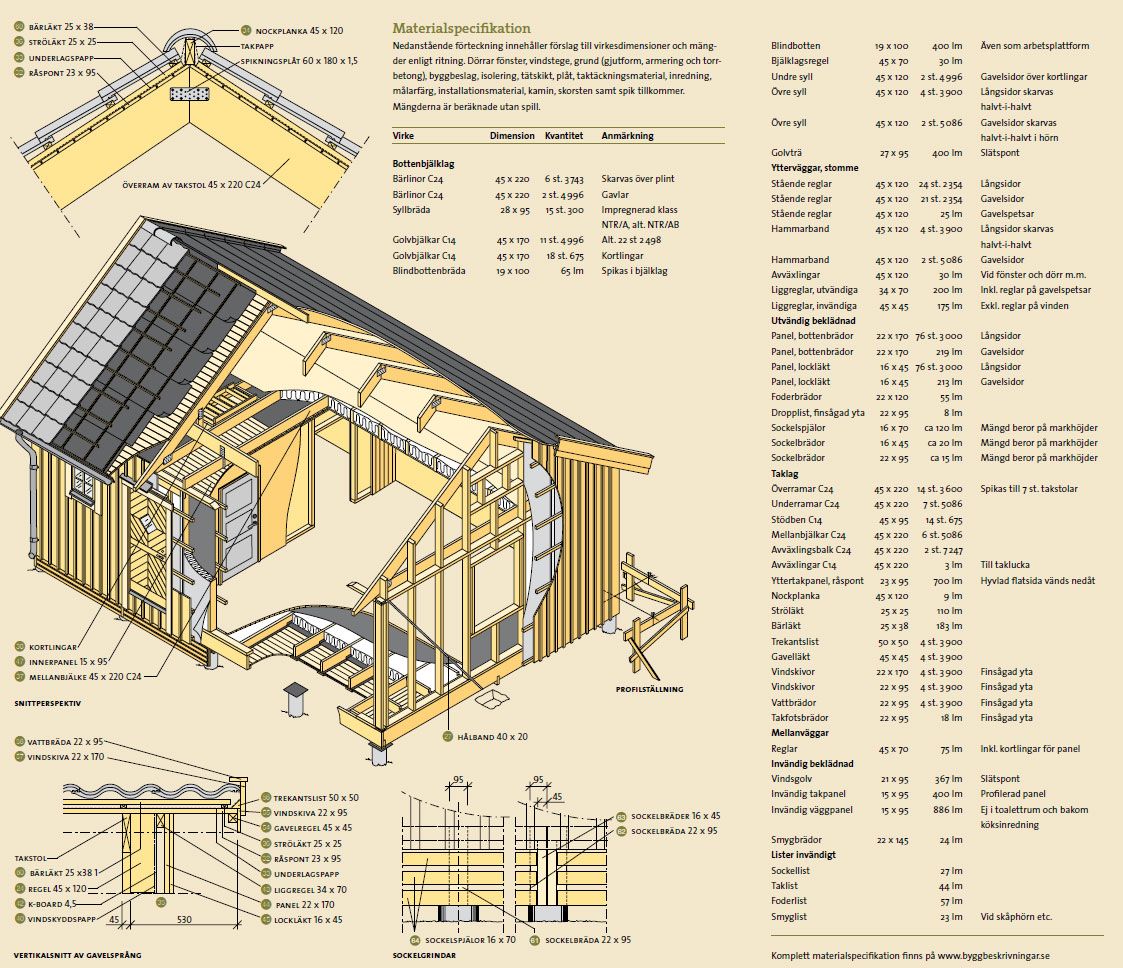
August 11, 2025 – A highly detailed architectural blueprint from Sweden offers a fascinating glimpse into the future of high-performance home construction. With a sophisticated, multi-layered wall system and a meticulous list of materials, it showcases an advanced approach to building a home that is durable, comfortable, and incredibly energy-efficient.
This diagram represents the pinnacle of modern building science for its intended climate. However, it also serves as a powerful lesson: a “perfect” design is rarely universal. The very engineering that makes this wall a masterpiece in a cold, damp climate like Scandinavia would make it a significant technical failure in a hot, humid climate like that of the American Southeast.
Step 1: Deconstructing a State-of-the-Art Cold-Climate Wall
To understand its limitations, we must first appreciate the brilliance of this Swedish design for its home environment. The primary goal is to keep the home warm and protected from the persistent dampness of a northern European climate.
- The Key Feature: The Rainscreen. The cross-section (
VORTIKALSNITT AV GAVELVÄGG) reveals the design’s most advanced feature: a ventilated rainscreen. This is a multi-layered system where the outer siding is not attached directly to the house. Instead, it is fastened to vertical strips of wood, creating an air gap (luftspalt) behind it. This gap allows any rainwater that gets past the siding to drain away harmlessly and, more importantly, it creates a channel for air to circulate and dry the underlying structure. It’s a state-of-the-art solution for managing exterior moisture. - The Insulated, Airtight Envelope: This advanced wall system is designed to be part of a super-insulated and nearly airtight building envelope. In a climate where heating is the biggest energy cost, this approach minimizes heat loss, creating a comfortable interior and dramatically reducing energy bills. This typically includes a carefully sealed vapor barrier on the interior side of the wall.
Step 2: The Critical Mistake – A Perfect Solution for the Wrong Problem
The critical mistake is assuming that this high-performance design is a universal solution. When you move this wall from a cold, damp climate to a hot, humid one, its strengths become liabilities.
- The Science: The Inversion of “Vapor Drive”. This is a key principle of building science. In a cold climate, the interior of a home is warm and moist, while the exterior is cold and dry. This creates pressure that pushes water vapor from the inside of the house to the outside. The interior vapor barrier is correctly placed to stop this. In a hot, humid climate, the situation is completely reversed. The hot, moisture-laden outside air is constantly trying to force its way into the cooler, drier, air-conditioned interior.
- Why the Swedish Wall Fails in the Heat. The interior vapor barrier, which is essential in the Swedish winter, would be disastrous in a Florida summer. It would trap the incoming, inwardly-driven moisture inside the wall cavity. With no way to escape, this trapped moisture, super-heated in the dark wall space, creates the perfect breeding ground for mold, mildew, and rot. The “perfect” wall becomes a self-destructing moisture trap.
Step 3: The “Perfect” Wall for a Hot, Humid Climate
A high-performance wall for a hot and humid region must be designed with the opposite goal in mind: it must be able to dry to the inside.
- The Strategy: The design must block solar heat while allowing any moisture that enters the wall assembly to escape.
- Shade and Reflectivity: The first line of defense is not the wall itself, but large roof overhangs to shade it from the sun and a light, reflective color for the siding.
- A Ventilated Rainscreen (Still a Great Idea!): The rainscreen is still an excellent feature for shedding the bulk water from heavy, tropical-style rainstorms.
- Exterior Insulation: Most or all of the insulation should be on the exterior of the sheathing (e.g., rigid foam). This keeps the internal wall cavity from getting hot.
- No Interior Vapor Barrier: This is the most critical difference. The interior side of the wall must be vapor-permeable. Standard drywall painted with latex paint is perfect for this. It allows any moisture in the wall to pass through and be removed by the home’s air conditioning and dehumidification system.
Conclusion: True Performance is Climate-Specific
“There is no such thing as a universally ‘perfect wall,'” says Dr. Anya Sharma, a (fictional) building scientist. “There is only the ‘perfect’ wall for a specific climate. This Swedish design is a beautiful example of a perfected cold-climate assembly, engineered to dry to the outside. A high-performance wall for a hot, humid climate must be engineered to dry to the inside. Applying one strategy in the wrong location is a fundamental error that can have severe consequences for the health of the building and its occupants.”
This sophisticated blueprint is an invaluable look into the future of construction. But its most important lesson is that the pinnacle of building performance is not a single set of materials or techniques. It is a deep and scientific understanding of the local climate and a design that intelligently manages the forces of heat and moisture, wherever it may be built.